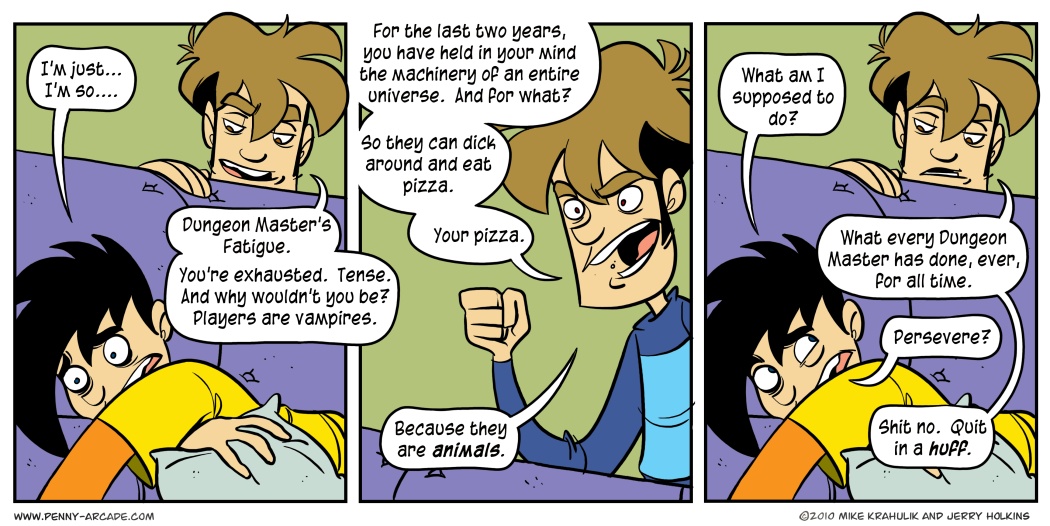I’ve played a bit of Star Wars Shatterpoint now and I feel comfortable giving you some initial impressions of the game. I’m playing this with my son Noah who is 13 and currently in the midst of an obsession with Star Wars that only a 13 year old is capable of.
So first of all, thank you to Atomic Mass Games for sending me the game and all the extras. This made me look like a pretty cool Dad!
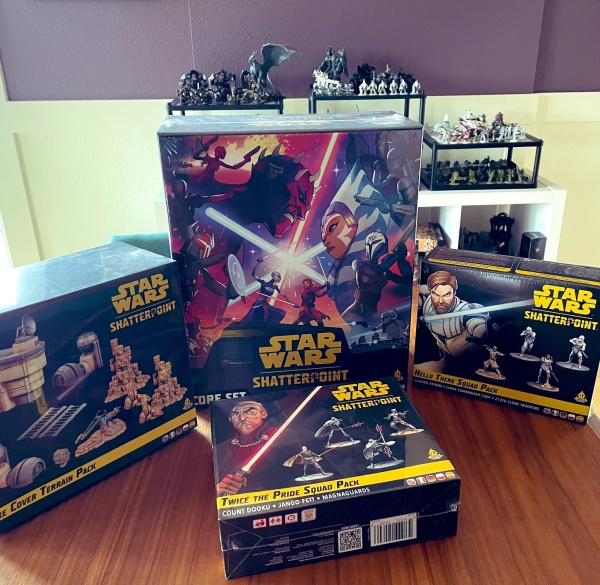
I looked over the rules myself first and decided to teach it to Noah in two parts. The game has a series of cards for determining control points that shift throughout the fight and a Momentum system that tracks the tug of war of battle. This sounds cool and I am sure we will layer that on eventually but for our first couple of games we just set up our dudes and tried to kill each other while focusing on the basics.
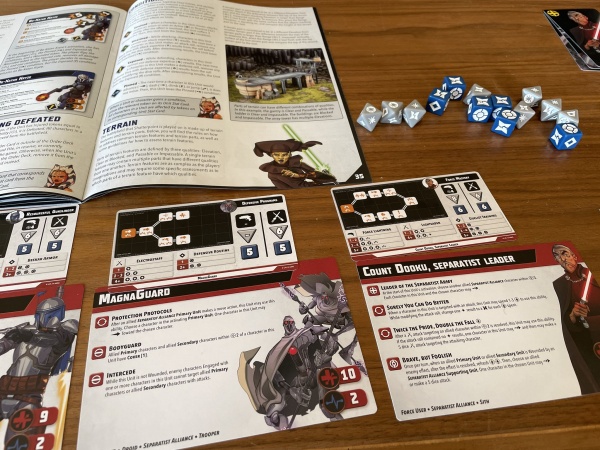
It helps that the basics in this case are very strong. Shatterpoint reduces the number of units you control down to only three or four, but cranks up the action and personality of each fight. It does this in a couple of cool ways that I’ll try to break down here.
In my opinion one of the coolest features of Shatterpoint are the combat trees. Take a look at the card for Anakin below.
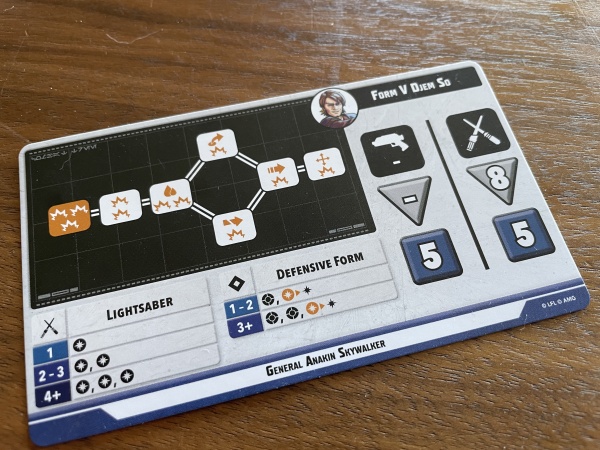
Instead of your successful dice rolls equaling damage, they instead allow you to travel along your character's custom combat tree (the linked boxes full of icons) . Each success allows you to move one space (going left to right) on the tree and gain the benefits of whatever is listed there. For example Anakin’s first box contains three damage symbols and his second has two, so two successes would allow you to deal 5 damage. Next he deals more damage and applies the “strained” effect meaning the target takes damage when they act next. After that he has a choice, deal damage and jump away or deal damage and pin the target so they can’t move next turn. Each character has a unique tree with different sorts of branching paths and options. Some characters like Jedi even have double sided cards with different combat trees on each side signifying various fighting styles.

You also get a lot of personality from the dice, specifically one of the sides that features the Expertise symbol. You have your standard sides like Critical, Hit (called a strike here) and Misses. After a roll, you count how many expertise dice you have and consult the chart on your character's card.

Each character has a unique set of charts that allow them to use Expertise in all kinds of cool ways that feel right for the character. You can see when defending, that Jango can turn 1-2 Expertise into two more blocks thanks to his Beskar Armor. It’s worth mentioning here that only “Strikes” can be blocked but some characters like Anakin can use their Expertise results to turn your critical hits into regular Strikes! It’s a really smart system that adds a ton of flavor to each fight.
In addition to these your character also has a card full of abilities that you can use. These require you to spend force points usually but tend to have big impacts on the flow of battle. The end result is that fights feel incredibly cinematic with characters jumping around shoving each other and repositioning during fights. Getting someone locked into melee is no guarantee that they will stay there.
Shatterpoint also simplifies movement by having all characters use the same couple of tools for either Advancing or Dashing. Noah and I had no trouble picking up the basics of turn order and the way attacks are measured and made. Like I said, I'm just trying to teach him the core rules right now and we’re still having a great time with action packed fights.
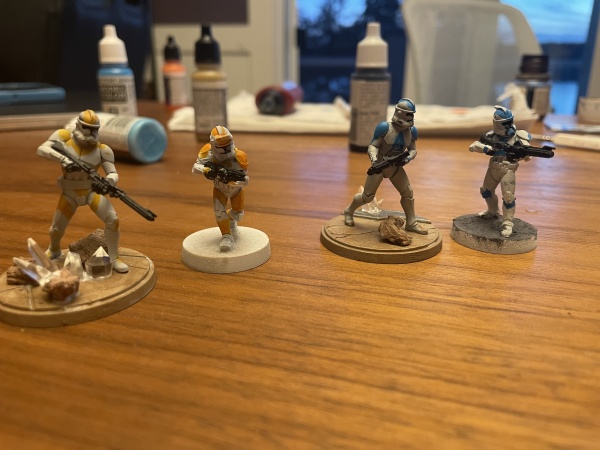
It’s worth mentioning that the Shatterpoint minis are actually slightly larger than the ones from Star Wars Legion and other tabletop games. Here’s a photo of Noah’s clones from both games to give you an idea of the scale. He wanted to make sure if I posted these that everyone knew he painted these himself without any help:)
That’s a quick look at Shatterpoint after a couple starter games. There’s a lot of potential in these systems and I’m excited to play more. Once I feel like Noah (and me) have a solid grasp of the basics I’ll incorporate the control points and momentum system. After I do that I’ll come back with a more robust write up. If you’re a fan of Star Wars and tabletop, I already feel comfortable recommending Shatterpoint.
-Gabe out
